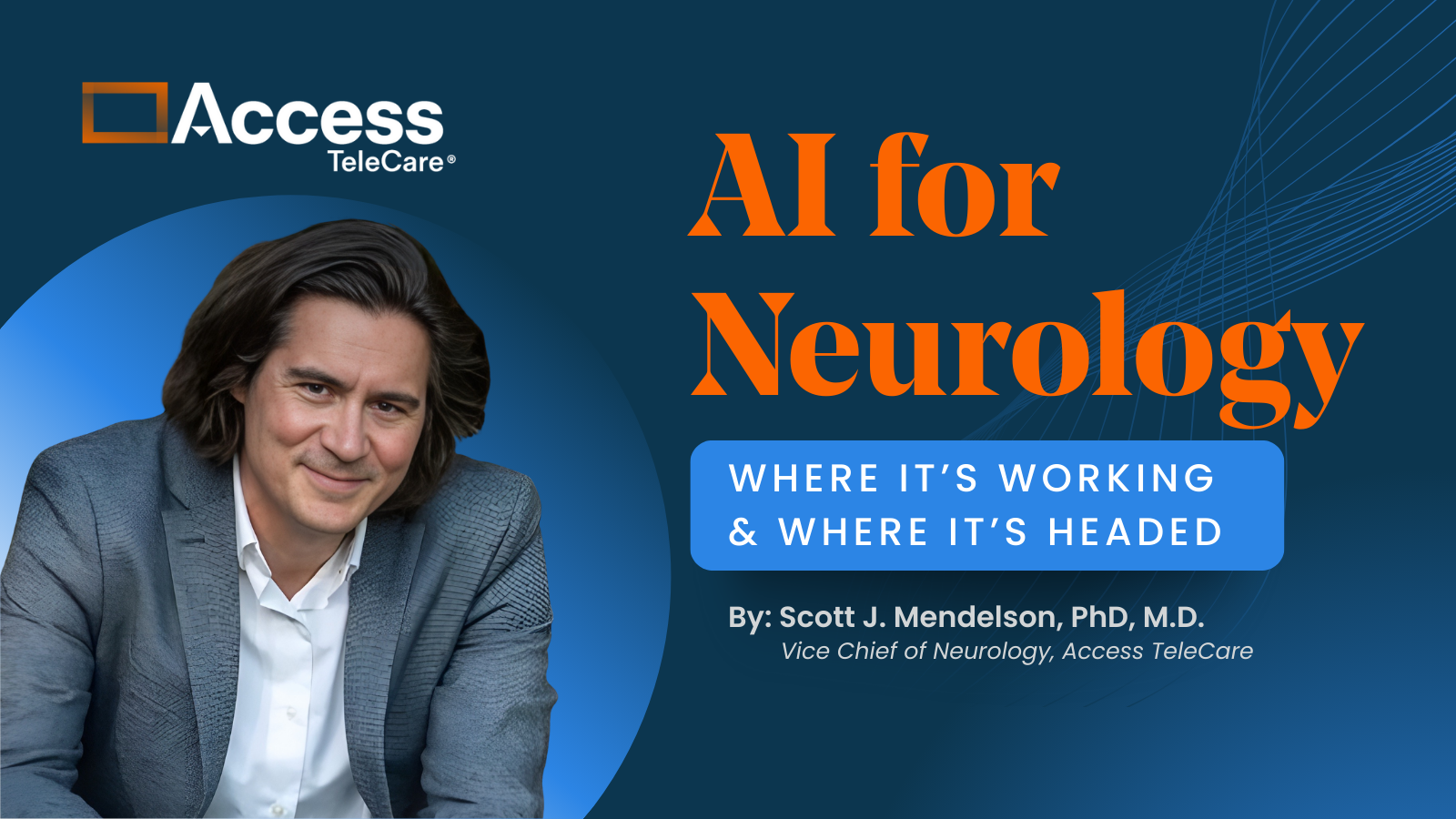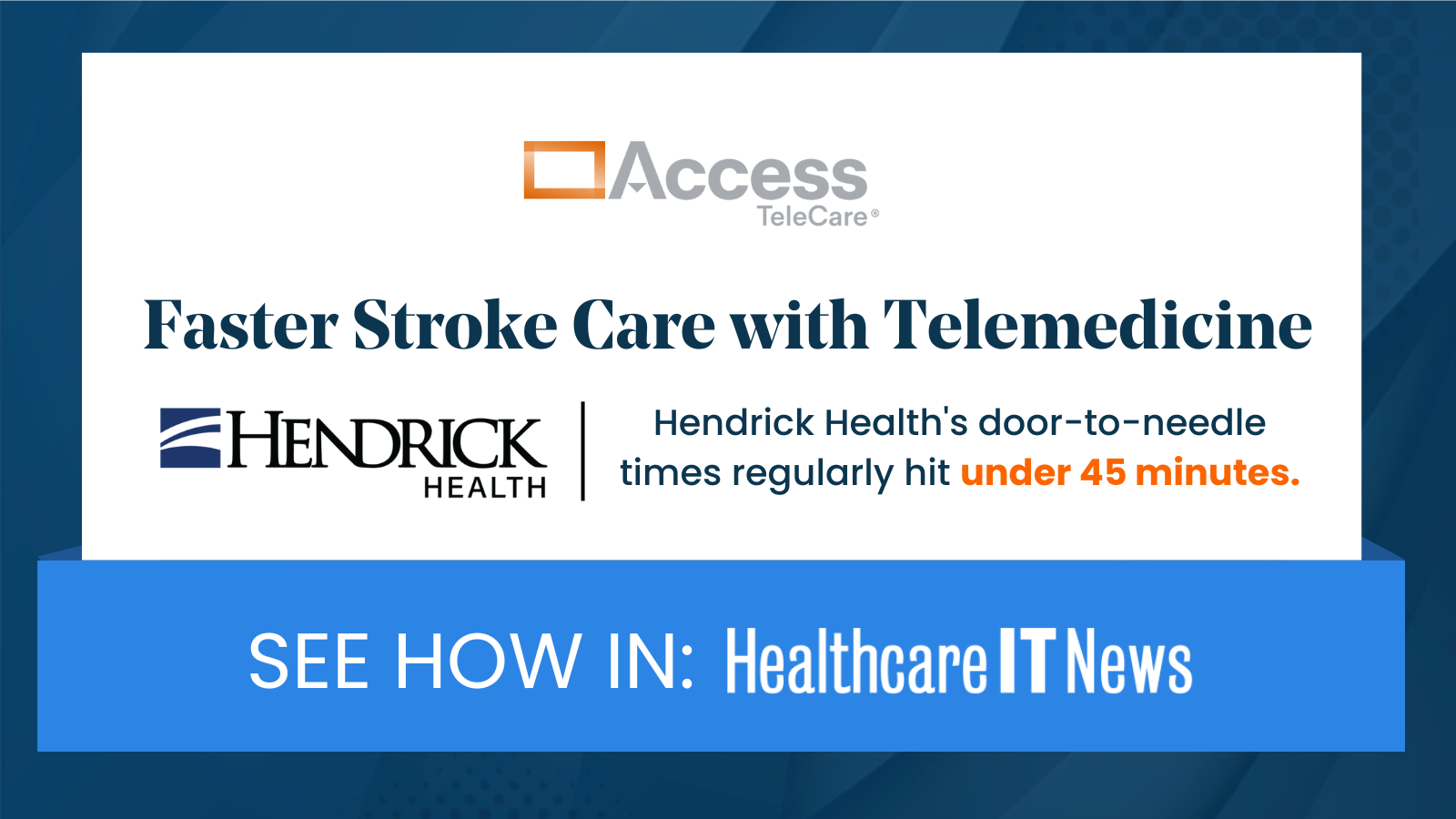By Dr. Eric Anderson, Chair of Neurology
Recent news and clinical reports raise the alarming incidence of strokes in COVID-19 patients younger than 50. As the largest teleNeurology practice in the United States, we typically see over 7,000 neurological consults each month across the nation which gives us access to several of these cases. We have seen strokes in patients as young as 30, with no other known health conditions aside from coronavirus infection. We are also seeing the gamut of neurological issues in infected patients including seizures, neuropathy, encephalopathy, etc. While evidence-based medicine is still being established in the midst of this global pandemic, it is important to consider the underlying pathophysiology. Are the symptoms we are seeing due to direct infection of neural tissue by the virus? Or is it due to the widespread systemic effects of infection? Our understanding of this will help us in treating and preventing the neurological sequelae that we see.
Understanding the Link Between COVID-19 and Increased Stroke Risk
Blood Clots as a Symptom
Healthcare workers around the world are reporting blood clots as an increasingly recognized symptom of the virus. These clots are seen throughout the body, in various organ systems such as the lungs and kidneys, and gut. There have also been reports of purple blotches on the feet of infected patients that suggest peripheral clots within those superficial vessels as well. It does not appear that these clots are relegated to any particular organ system, and have been found to be occurring in the brain as well and resulting in strokes. Many of the strokes seen in these patients have primarily been Large Vessel Occlusions (LVOs), with the potential for permanent and life changing effects if not diagnosed and treated immediately.
Because of the risk of blood clots in infected patients, the International Society on Thrombosis and Haemostasis is recommending prophylactic use of anticoagulants in COVID-19 patients as a precaution against clots and strokes; the increased risk of bleeding is weighed against the propensity of clots forming.
Leveraging TeleNeurology Expertise in COVID-19 Stroke Cases
There is still very much we do not know. We are reviewing our own cases and clinical information from many different hospitals regarding the neurological effects of the virus and sharing the latest information with our team. As a large practice spanning much of the nation, we have the added advantage of being able to compare and contrast cases internally and with the hospitals we serve. Our collective expertise is at the service of the entire treating team for each patient.
Emergency Visits for Stroke are Down Nationwide
Along with other medical professionals, we are concerned that patients with stroke symptoms, especially younger patients, are not seeking timely medical treatment. Reasons may include being fearful of visiting an emergency room because of the risk of infection—especially those otherwise asymptomatic, or because they aren’t aware of the signs of stroke, which we list below as a public service.
FAST Stroke Warning Signs: How to Identify and Act Quickly
- Face Drooping
- Does one side of the face droop or is it numb? Ask the person to smile. Is the person’s smile uneven or lopsided?
- Arm Weakness
- Is one arm weak or numb? Ask the person to raise both arms. Does one arm drift downward?
- Speech
- Is speech slurred? Is the person unable to speak or hard to understand? Ask the person to repeat a simple sentence.
- Time to call 9-1-1
- If the person shows any of these symptoms, even if the symptoms go away, call 9-1-1 and get them to a hospital immediately.
As a practice, we encourage everyone to be aware of the signs of stroke, regardless of age. Especially in this current pandemic where this novel virus may cause strokes in younger groups who would have never considered it a possibility. Rapid recognition and treatment of is imperative in providing the best outcome possible.
****
Dr. Eric Anderson, Chair of Neurology at Access TeleCare and leader of SOC’s Neurology Council, is an innovative physician-scientist who’s been recognized as a national leader in telemedicine and mobile health. He trailblazed the use of mobile telemedicine in emergency neurology and was the first to demonstrate and publish that remote stroke assessment could be performed with an iPhone. He speaks nationally on the topics of telemedicine as it applies to stroke, epilepsy, and neurologic disease. He currently practices telemedicine in 32 states and at over 240 hospitals, and is the Director of Telemedicine and Medical Director for Corticare, a national neurotelemetry company based in Carlsbad, CA. He also devotes his time to operating Intensive Neuromonitoring, a Tele-EEG company in Georgia that specifically caters to private practices and small hospitals. Dr. Anderson leads several efforts in bringing telemedicine and technology to the forefront of medicine.









